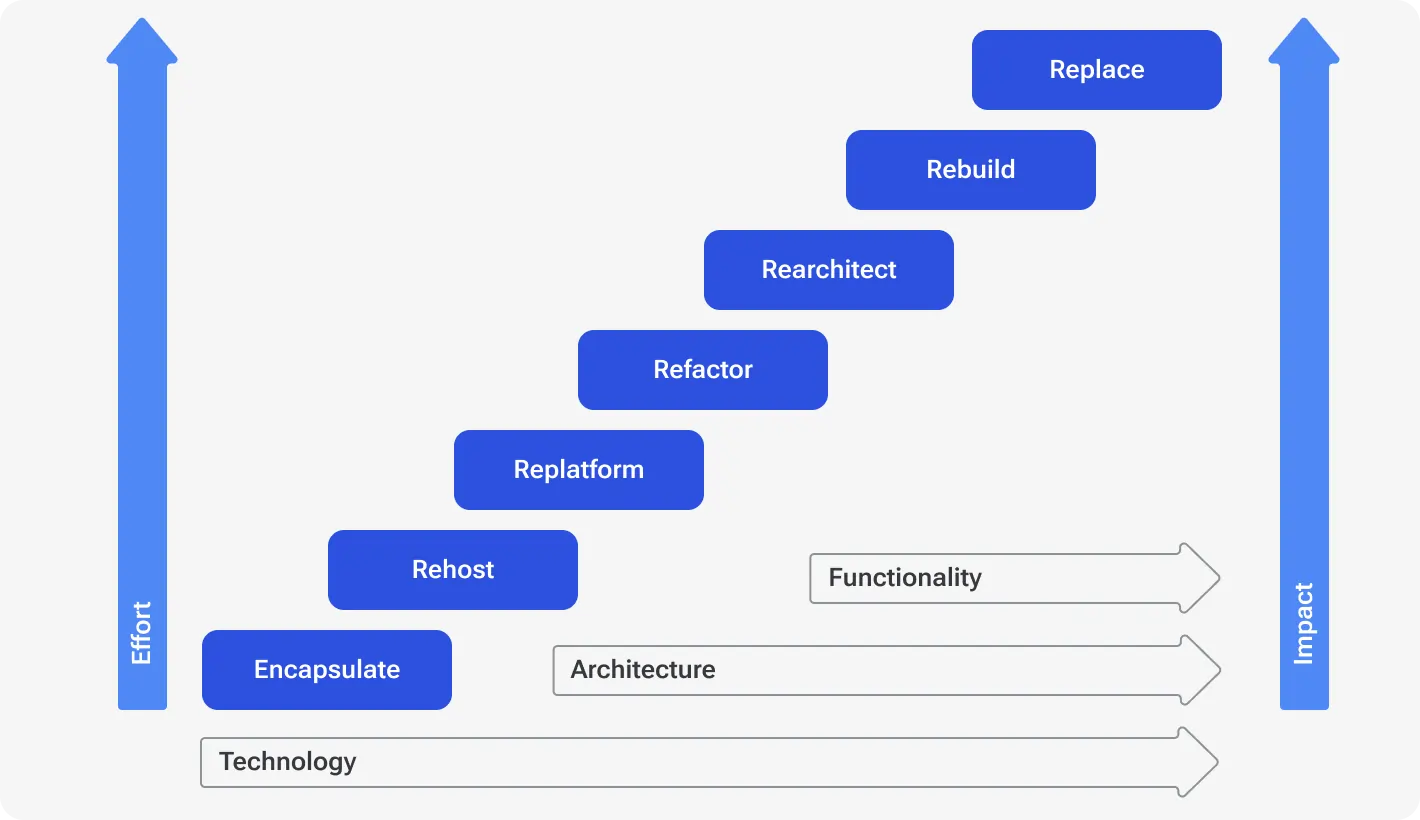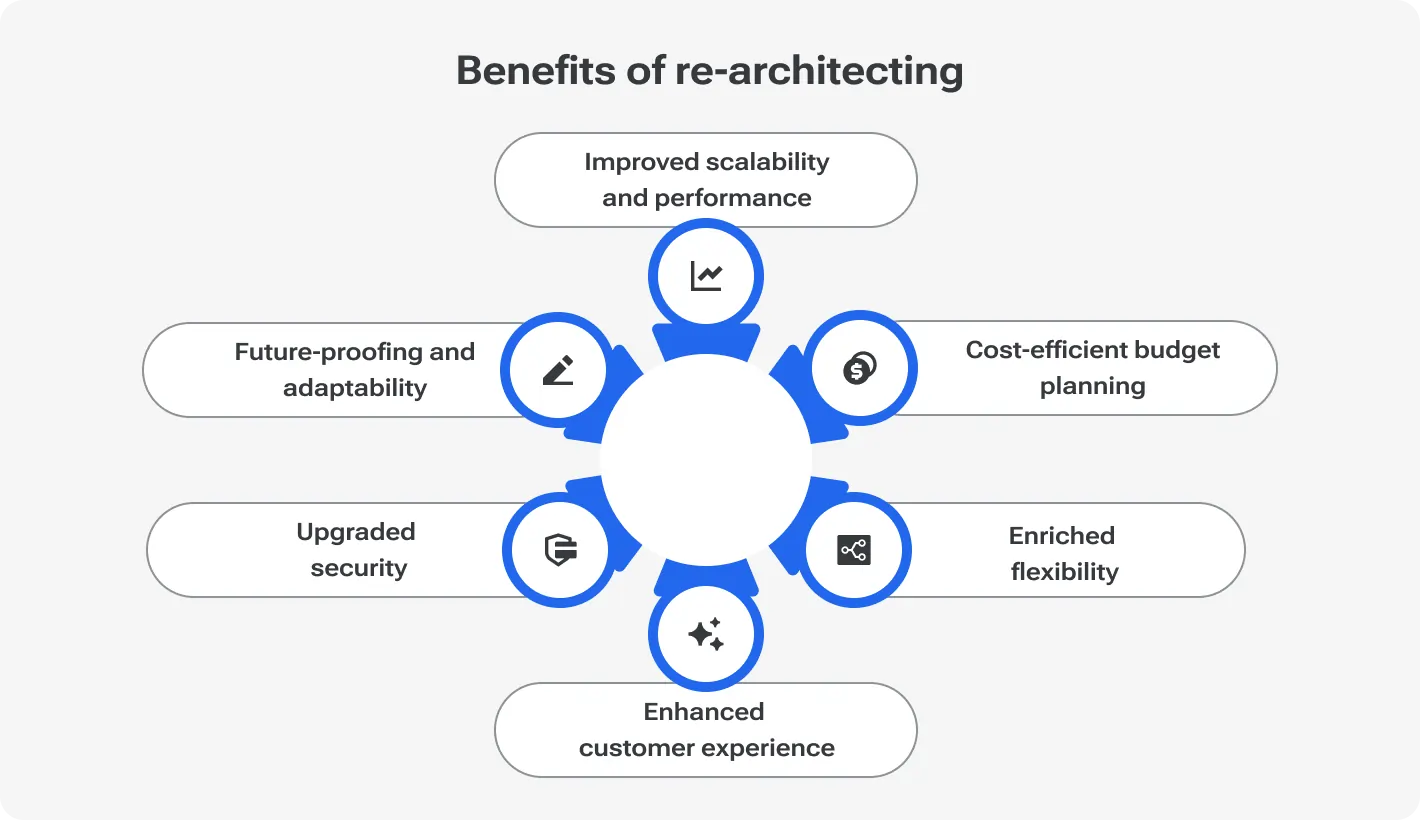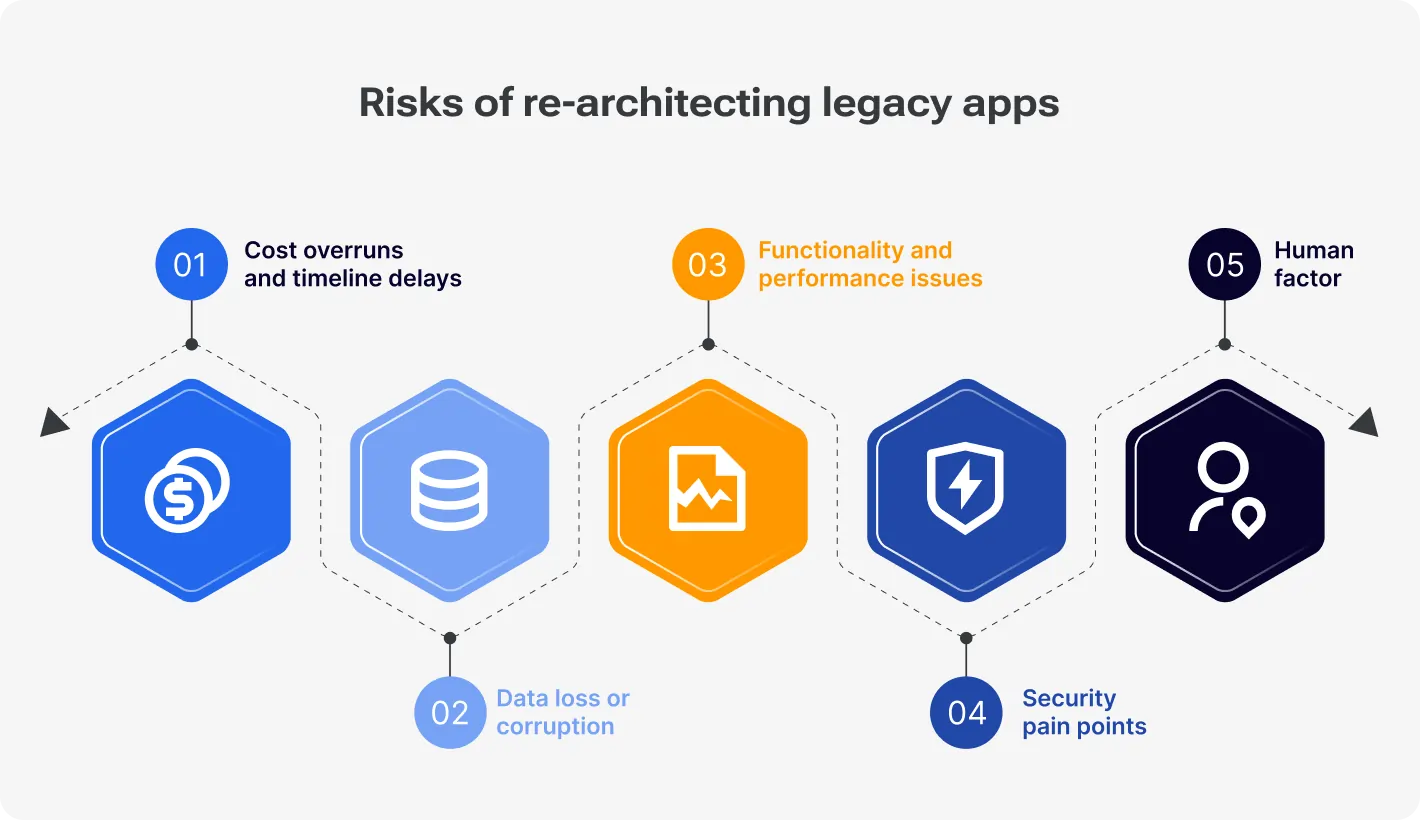Outsourcing to Czechia

How much does it cost to hire developers in Czechia?
Dec 2nd 25 - by Devico Team
Find out how much it costs to hire software developers in Czechia in 2025. Compare hourly rates, roles, and factors that impact pricing.
Hire
Hire by role
Hire Front-end developers
Hire Back-end developers
Hire Full-stack developers
Hire Android developers
Hire iOS developers
Hire Mobile developers
Hire AI engineers
Hire ML engineers
Hire Automation QA engineers
Hire Blockchain developers
Hire Data engineers
Hire Cloud engineers
Hire by skill
Hire JavaScript developers
Hire TypeScript developers
Hire Ruby on Rails developers
Hire React Native developers
Hire Flutter developers
Hire Golang developers
Hire React.js developers
Hire Python developers
Hire PHP developers
Hire .NET developers
Hire Java developers
Hire Laravel developers

Legacy modernization
May 14, 2024 - by Devico Team
Summarize with:
Have you noticed it is becoming more and more difficult to keep up with the development of technology? Each day brings new ways of making daily things simple, fast and efficient. The paradox here is the adoption of the latest tech achievements usually takes a while.
This is especially true for legacy software that is more of a steam power than a state-of-the-art engine that lifts aircraft in the sky. Digital transformation allows for quicker legacy modernization, however, which way is to choose and why?
In this article, we’ll talk about re-architecting as one of the most promising and capable ways of legacy app modernization.
Let's start with the basics. Legacy application is an outdated software that no longer fits your requirements and needs. These are usually programs with obsolete code (for example, written in an old language), extremely complex monolith architecture, low scalability, and constant operational and compatibility problems. While it still may contain valuable information at some point it becomes not profitable to maintain such a system. This is exactly that moment when you should consider legacy application modernization. Your key indications would be:
The app doesn't meet your (or your customer's) needs and requirements;
Implementing new features is too hard or impossible;
Your current software can't handle the workload;
Updating and maintaining makes a hole in your budget;
You may have security issues.
Current legacy application modernization offers several ways: from the simplest encapsulation (just a new modern interface and minor changes) to complete rebuilding and replacement. For those who need a bit more than a tiny repair and are not ready for a full transformation, there are several in-between: rehost, re-platform, refactor, and re-architect.

The path of least resistance that is usually characterized by the migration of the code base from one environment to another. This can solve simple maintenance problems but is unlikely to become a go-to solution for complex systems.
Although most often the migration takes place to cloud servers (or even changing one cloud to another), this does not allow to reveal the potential of the outdated application and only partially solves challenges, such as high costs and low efficiency.
A middle option between re-hosting and re-architecting that allows you to get the best of both ways. You still have to make changes to the architecture through containerization or microservices and migrate to a new environment, such as a cloud or new server, but it is a fairly fast and cost-effective way of modernization.
Legacy application re-platforming is a relatively easy and fast way that will suit small and middle-sized companies, whose application's architecture is still amenable to flexible adaptation. It will boost compatibility with the new environment and the integration of third-party applications.
Refactoring concerns only the code base, because all work is done on the backend and does not affect the application's external behavior. This is necessary to reduce technical debt and improve the quality of the code, which in turn allows you to speed up the work of the program, improve performance, and significantly stabilize it. It is an ongoing process that can be held iteratively and implemented almost seamlessly as you can work with separate modules or functions.
In simple words, re-architecting includes all previous options for modernization and, obviously, is the most difficult method. It is a comprehensive way to transform a legacy application that includes rebuilding and redesigning infrastructure, data storage, migration, and rethinking most of the application's processes. Due to its complexity, re-architecting is not the number one choice for most companies, but it provides long-term advantages.
Re-architecture allows you to get the necessary flexibility, scalability, and agility for building modern software, which will significantly reduce the time for updates in the future. The legacy app becomes compatible with modern tech and frameworks, easily integrated and modified with additional tools. It is a great investment for further growth and development.
The other side of the coin reveals some disadvantages of re-architecting legacy apps. It is still a rather cost- and time-consuming process that will require additional planning and control efforts. Moreover, it is risky at any stage: you can lose your information, become vulnerable to breaches, or face operational issues during renovation. And you'll need a whole team of professionals who will dedicate their time to re-architecture only.
Anyway, let’s take a closer look at what you get and what you should consider with re-architecting legacy applications.
When getting involved in a complex long-term rework of an outdated application, you must clearly understand your goals and potential gains, so start by defining why you are doing it and whether the game is worth the effort. We've explored and highlighted the most crucial benefits you can get with re-architected legacy software.

One of the main weaknesses of legacy software is the inability to add new options or expand it enough to meet ever-increasing needs and requirements. In short, an outdated application cannot withstand the load and does not respond to changes. As a rule, quick attempts to fix the situation lead to reduced speed and a downturn in application performance.
Re-architecture opens up new opportunities for flexibility and scaling:
Get absolute freedom to make changes from a new user interface to advanced functionality;
Apply refactoring of the code, containerization, the transfer of services into microservices, and migration to cloud-native technologies to adapt the application to current and future needs at any time.
Few people think about it but the maintenance of outdated applications entails a lot of operational costs, this applies to hardware support and the search (or development) for permanent patches to maintain the functionality of the program. A complex structure or the use of an outdated codebase also requires specialists who will be able to solve problems that one way or another arise when using such programs.
All of these are additional costs that can be reduced through:
Automation and the transition to microservices-architecture or serverless computing; their maintenance requires less time and effort.
Migration to public or private clouds reduces the costs of maintaining mainframes and servers, leaving costs only for a reliable service vendor.
Most outdated applications have a monolithic architecture, which significantly limits, and in some cases makes it impossible, to add new options, integrate with third parties, or make crucial changes to the interface and operation of the application.
The modular or microservices-based architecture allows for:
Experimentation and innovative technology implementation;
Work on separate services almost without changing the operation of the app deploying new features and updates rapidly.
Demand begets supply. In today's world, it is very difficult to build loyal and friendly relationships with customers if you do not have the opportunity to fully satisfy their needs. And, of course, it is almost impossible with outdated applications that can't compete with responsive apps with rich yet intuitive designs.
Increase customer retention, loyalty, and satisfaction new options available after proper re-architecture:
Integration of new authentication methods, for example, through social networks;
Additional simplified or extended functionality;
Design settings;
Personalization capabilities.
Digital security became an issue from day one since the first virus and malware software was developed. Data preservation is also among legacy modernization challenges. The inability to update protocols in time or introduce new algorithms for data protection makes the program vulnerable to hackers.
The new architecture implementation allows you to:
Absorb the latest methods of encryption, access control, audit, monitoring, and firewalls that will be on guard for sensitive client or internal information;
Quickly eliminate the consequences of a hack if it happens, investigate its causes, and close the breaches.
Although it is quite difficult to predict the development or appearance of any new specific technology or option that the user will need, the modular or microservices-based structure makes it easy to scale the app at any time.
The re-architectured application always has room for improvement and innovation.
Total rethinking of the application allows you to create a renovation plan with future integrations and changes in mind.
Here are some examples of how re-architecture has led companies to success.
When it comes to changing the architecture from monolithic to microservices-based, you can't ignore Netflix, since they were one of the first to make a choice in favor of the latest technologies.
One of the largest streaming platforms in the world began the transition to cloud technology back in 2009, choosing Amazon Web Services as a partner. So that the transition was smooth and imperceptible, they had to use both old servers and new ones at the same time. The transition was gradual and ended finally in January 2016, when they were able to close their data centers and completely transfer all services, which currently number more than a thousand, to new containers that communicate with each other via API.
Yury Izrailevsky, Vice President, Cloud and Platform Engineering at Netflix, said: "We chose the cloud-native approach, rebuilding virtually all of our technology and fundamentally changing the way we operate the company. Architecturally, we migrated from a monolithic app to hundreds of micro-services and denormalized our data model, using NoSQL databases. Budget approvals, centralized release coordination and multi-week hardware provisioning cycles made way to continuous delivery, engineering teams making independent decisions using self-service tools in a loosely coupled DevOps environment, helping accelerate innovation."
As already mentioned above, re-architecture, in addition to significant advantages, definitely has pitfalls that must be considered when choosing this way of modernization. Quick note: before the modernization comes to changing the interface and functionality, research the needs of your users, because, in addition to technical problems, you may encounter unexpected resistance from consumers who will not be able or will not use the updated applications.

If you choose re-architecture as your legacy modernization option, be prepared to face constant time delays and an increase in the budget for the transformation of an outdated application. Even though the system is in the palm of your hand and you can always examine it along and across, it is very difficult to calculate the necessary time and resources that can be spent. A comprehensive approach to the modernization of the entire system provides for several options as well as challenges that the team may face on the way to renovation: too old codebase, the lack of proper documentation or skills, integration and migration issues, and transit to other forms of architecture.
Since migration to a new environment is often one of the main parts of the re-architecture, data retention is also one of the key tasks during the process. To prevent the loss or damage of data during transfer to the cloud or another new environment, it is crucial to monitor the process at each stage and necessarily have backup copies from which information can be restored.
Replacing or transforming the old architecture is a long-term process, also because it is necessary to consider software critical functionality which must be ensured during the modernization. Working on one feature, for example, bringing it to microservices, or changing the key options of the application can significantly affect how it operates. If the process is related to the cloud environment migration, the functionality must be provided by the old methods until the new ones are finally launched and thoroughly tested.
Like it or not, security is one of the leading application modernization challenges. While the transition to a new architecture should improve the ways of protecting information, the process itself can be dangerous for ensuring data safety.
There are several points that must be taken into account during re-architecture:
Study the security weaknesses of the system before starting the modernization;
Use the latest methods of accessing and encrypting information;
Apply best practices to get the most out of re-architecting.
Working on such a complex and multifaceted project requires skillful engineers and proper consistent management. You must be sure that you are cooperating with professionals who really understand what they are doing, can provide a quick update, and fix errors in time if they appear. All project participants must stay on the same page and be equally interested in high results. In addition, the involvement of C-management or stakeholders in the re-architecture process is also essential, since they are the main decision-makers, they must understand what is happening. Potential disputes or misunderstandings within the team can lead to irrational use of resources, delays, and problems with legacy software performance.
No one is immune from the risks of system re-architecture, this is one of the examples.
Lloyds Banking Group announced a major project to move its core banking systems to the cloud back in early 2019. The bank has developed a three-year strategy for the gradual transition to the latest technologies. Zak Mian, group director of transformation at Lloyds Banking Group, said: “A key part of our recently launched three-year strategic plan is applying technology innovation to meet our customers’ evolving needs. I am really excited to work with IBM and the Thought Machine team to explore ways to simplify and enhance our IT architecture and help our journey to make banking easy and simple for customers.”
However, the project faced significant delays and cost overruns caused by the legacy systems' complexity. They also had issues with ensuring data integrity and security during the migration process. The bank had to revise its schedule and budget. During this time, they also had to review their strategy, determine which options would be transferred to internal servers and storage, what would be placed in external, and which vendors would serve them. Although they are partially successful and updating the system has improved performance, the process is still ongoing.
The main goal of re-architecting outdated software is not to get rid of its shortcomings and gain a competitor advantage but to make the application flexible, scalable and easily adaptable to possible needs of the potential future. What can help in this better than the disruptive technology adaptation?
5 trends in legacy modernization
Cloud-native solutions are considered as one of the most promising trends in the outdated applications modernization. Migration to a cloud environment allows you to make the application flexible, scalable, agile and integration-friendly. It helps to reduce costs and gives additional guarantees of data safety. It is a perfect base for containers, microservices, serverless computing that allows the extension of the system according to fast-growing requirements, easy and cost-effective.
Event-driven and microservices-based architecture are the reliable future of legacy applications. Despite the more than ten-year history of using microservices-based architecture, its popularity has not decreased. On the contrary, most companies are just starting their migration from monolith architecture. Event-driven architecture has become more popular recently as organizations seek to build more responsive, and resilient software systems. This became possible thanks to serverless computing, which provides real-time event processing.
Artificial Intelligence and Machine Learning are most often used to automate and process large amounts of data. However, their potential for re-architecture is also considered as advisors for adapting best practices during code refactoring and developing a strategy for transitioning to microservices.
Internet of Things (IoT) Integration during re-architecture can revolutionize the infrastructure. IoT is used in close connection with Big Data, AI and ML to process huge amounts of data collected from devices. IoT platforms, such as AWS IoT, Microsoft Azure IoT, or Google Cloud IoT, allow you to leverage built-in capabilities for device management, data processing, and analytics.
As practice shows, even if the latest technologies and solutions become obsolete already tomorrow, it is necessary to be ahead of your competitors not only in using the latest methods but also in building a winning long-term strategy.
Among all methods of legacy app modernization, re-architecture appears to be the most controversial one. This is a comprehensive way that is not available to everyone but it provides the most valuable advantages for business. In the long term, it is the transition to a new architecture that allows you to make a truly flexible and scalable application, to be able to integrate any new options and third-party functions, to constantly update the design, accessibility, and adaptability, to ensure reliable protection of sensitive information.
However, it is definitely impossible to ignore the risks that arise during such a difficult and lengthy process. A constant increase in terms and budget can lead to a stoppage of modernization at any moment. In addition, there is a disturbing possibility of data loss, data corruption, loss of functionality or application disruption, unforeseen glitches, or problems on the user's side. Do not forget that the security of the application during the update is also at risk because it creates an additional window for hacking. Although the human factor also refers to risks, it is the careful selection of partners and constant synchronization with developers that allows you to reduce most of these risks and obtain the desired high-quality result.
Another important thing to keep in mind during re-architecting is potential future needs so that they can be predicted or satisfied at the necessary moment. Do not forget to use disruptive technologies that are constantly developing, and can offer best practices, deep analytics, and increased adaptability of your application.
Outsourcing to Czechia

Dec 2nd 25 - by Devico Team
Find out how much it costs to hire software developers in Czechia in 2025. Compare hourly rates, roles, and factors that impact pricing.
Outsourcing to Czechia

Nov 25th 25 - by Devico Team
Compare Czechia and Poland for software outsourcing in 2025. Discover costs, talent, infrastructure, and which country fits your project best.
Outsourcing to Czechia

Nov 18th 25 - by Devico Team
A complete guide to outsourcing software projects to Czechia, learn about costs, talent, benefits, and how to build successful partnerships in 2025.